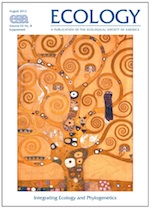CBS researchers are integrating phylogenetics and ecology to bridge deep past and present, and better understand biodiversity and adaptation.

They are all players in nature’s dramatic process of evolution, representing branches of stunning diversity on a tree of life that has blossomed from deep time and today manifests in complex colors, behaviors, patterns and communities of plants and animals.
Evolutionary biologists, who investigate that complex tree of life, can hear hoof beats from past ages, see ancient form and function in today’s plants and animals, and smell in Minnesota pines the perfume of the pleistocene.
“A legacy of evolutionary history persists in ecological patterns and processes we observe today,” says University of Minnesota ecologist Jeannine Cavender-Bares, co-editor of a special issue of ECOLOGY, the journal of the Ecological Society of America.
Cavender-Bares and her College of Biological Sciences colleagues are seeking a better understanding of the organization and diversity in today’s communities of plants and animals by understanding organization and diversity in related plant and animal communities in the deep past. To do this, they need to understand the biological and ecological relationships between organisms living tens of millions of years ago and how they and their ancestors, through adaptation, have influenced plant and animal communities of today.
“To understand the causes, maintenance and consequences of diversity, we have to integrate the investigations of evolutionary and ecological processes,” explains Cavender-Bares.
Accordingly, they are uniting ecology – the study of relationships between organisms with respect to each other and their environment – and phylogenetics, the study of evolutionary genetic relationships among groups of organisms.
“We want to better understand how the adaptations that evolved in the distant past are still driving today’s ecological responses to environmental stress,” she explains. “The attributes of species that evolved as long ago as 80 million years, when the earth was very warm, have not been erased by time and subsequent evolution.”
The scientists want to know not only how today’s communities of plants and animals have come to be as they are, but also how their lineages have changed over time - and continue to change – in response to ecological pressures and climate change. Gaining this understanding requires knowledge of genetic relatedness among species as well as accounting for their similarities in form and function and community patterning.
Gaining a better understanding how plants and animals have come to be distributed in the patterned communities we see today requires a large cadre of scientists working together and sharing data.
“This special issue of ECOLOGY is the result of years of study by scientists collaborating through working groups sponsored by the National Evolutionary Synthesis Center and the Long-Term Ecological Research Network,” explains Cavender-Bares.
The LTER is a network of scientists working at 26 research sites around the the U.S. and the globe. Sites span a great range of ecosystems - from alpine tundra, to barrier islands, to deserts, to coral reefs, to the backyard garden. The National Science Foundation’s research site at Cedar Creek Ecosystem Science Reserve, an hour from the University, is one such LTER research site.
“The Network’s mission is to provide people with the knowledge and predictive understanding necessary to conserve, protect and manage the nation’s ecosystems and biodiversity,” explains Cavender-Bares.
She credits recent technological and methodological innovations in DNA sequencing, bioinformatics, and data storage as crucial to the task of uniting ecology and phylogenetics.
“Early naturalists integrated ecology and evolution, but lacked the tools we have today,” she explains. “There has been a huge effort over the last 10 years to generate the informatics and computational tools, such as rapid DNA sequencing, necessary to generate phylogenetic trees of plant life, for example,”
According to Cavender-Bares, understanding the origins of species is important for understanding how a species responds to change and also important for being able to predict responses of organisms to global climate change and urbanization.
How a particular organism’s ecological niche evolved, and how habitat and ecology played a role, are among the important questions in the analysis of today’s plant and animal communities and their sustainability.
“We find that there are rules governing how species pools assemble into local communities,” explains Cavender-Bares. “Long-term research has shown that phylogenetic diversity increases through succession and that increasing phylogenetic diversity enhances stability.”
– Randolph Fillmore

- George Weiblen, Tim Whitfeld and colleagues examined plant-insect interactions in New Guinea. They investigated how the number of herbivores in a rain forest community can be explained by the phylogenic and functional traits of the host plants.
- Cavender-Bares and Sarah Hobbie unraveled the phylogentic and functional relationships between house garden plants along an urbanization gradient.
- Cavender-Bares and Peter Reich looked at how fire is a major driving force in the evolution of plants and the structure and function of ecosystems.
- Jessica Savage investigated drought tolerances in willow and poplar communities.
- Kenneth Kozak asked: “What determines the total number of coexisting species in communities of salamanders?”
- David Tilman found that phylogenetic diversity begets ecosystem stability